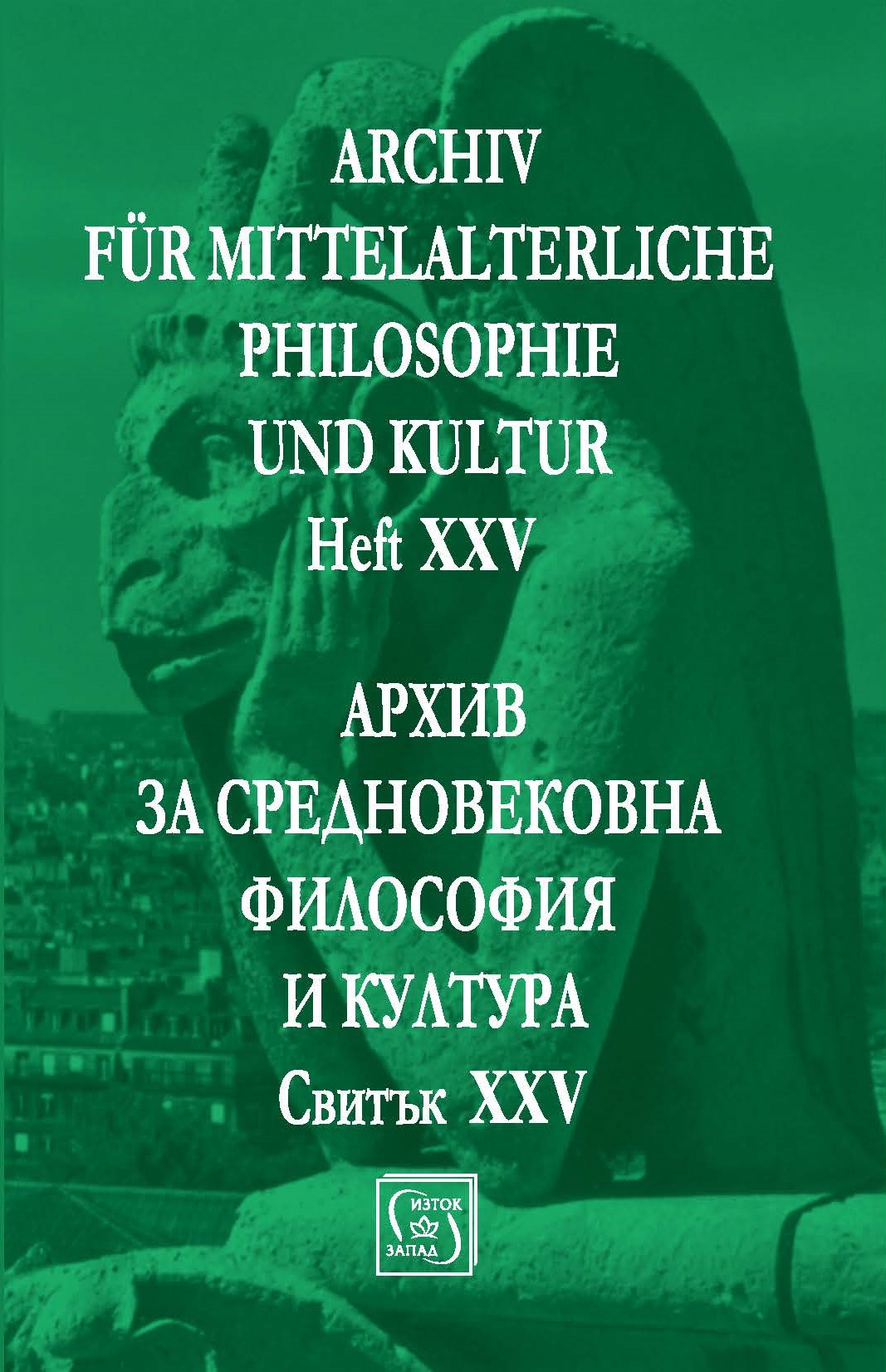Средновековната латинска рецепция на Дионисий Псевдо-Ареопагит: база и основни позиции
The Medieval Latin Reception of Pseudo-Dionysius the Areopagite: Base and Main Positions
Author(s): Georgi KaprievSubject(s): Christian Theology and Religion, Philosophy, History of Philosophy, Theology and Religion, Philosophy of Middle Ages
Published by: Издателство »Изток-Запад«
Keywords: Pseudo-Dionysius the Areopagite; οὐσία-δύναμις-ἐνέργεια relation; causality; substantiality; conceptual models;
Summary/Abstract: The paper ends first of all with a pseudo-debate between Andreas Speer and Georgi Kapriev, that also found a reception in the specialist literature. I insist in 1995 that Thomas Aquinas transform in his Dionysius reading the system of Eastern thought into its own metaphysical system. Speer replied in 1999. The "debate" was commented by John D. Jones in 2005. But a dispute does not exist. Speer is quite right. My goal was to paid attention to address the one massive byzantine interpretation, which was little known in the West. Still, the question remains whether one should not speak of a rivalry between Eastern and Western Dionysius interpretations within medieval Christian culture. Is there a competition between such interpretations within one or the other cultural region?The earlier Byzantine tradition regards the doctrine of the οὐσία-δύναμις-ἐνέργεια relation as a universal element of the philosophical and speculative-theological apparatus, in that this element is understood as the main axis of the Dionysian doctrine. A problematization of this connection seems to be the polemic within the context of the Hesychast controversy broken up in the 30's of the 14th century. Particularly characteristic is the position of the Byzantine Thomists. Prochoros Kydones, the most distinguished Byzantine Thomist, devotes a separate script to the essence-energy problem: Περὶ οὐσίας καὶ ἐνεργείας. The whole book shows that the relevance of the οὐσία-δύναμις-ἐνέργεια perspective remains for Prochoros a piece of evidence for both God and the creature, but he insists that the corresponding concepts are ἀναλογικῶς predicated on God and the creatures. Pseudo-Dionysius the Areopagite remains for him, as for all Byzantine thinkers, the main judge in this field. The framework of the Western tradition, which firmly links the Dionysian doctrine with causality, whereby δύναμις and ἐνέργεια are interpreted as the possibility and actuality of the individual substance, is already outlined in Hugh of Saint Victor in his commentary on the "Celesstial Hierarchy". This model is also detectable in Robert Grosseteste, which follows Hugh. The Victorians and Grosseteste build the basic coordinate of the Western Dionysius reading. In this context, are developed the comments by Albert the Great and Thomas Aquinas, which make Dionysius appear as a first-rate guardian of the transcendental philosophy. Here the Good articulates God's causal relation to his Creation. Despite all the variety of Western Dionysian reception, no one deviates from these basic positions. The plausibility of the respective reception of the Latin Dionysius depends entirely on their convertibility with the own principles of the corresponding philosophical model. Exactly the same is to be said for the Byzantine reception.It should be noted that the Corpus Areopagiticum was and remains open to interpretations rooted in various Christian traditions. The power of persuasion depends on the inner consistency of the interpretation model. An interpretative rivalry between East and West or a competition between the interpretations of Dionysius can not be identified: a dispute in this field has never actually occurred. The consequence or inconsistency of the individual exegesis can only be registered in the perspective of the respective culture of thought.
Journal: Архив за средновековна философия и култура
- Issue Year: 2019
- Issue No: 25
- Page Range: 83-99
- Page Count: 17
- Language: Bulgarian
- Content File-PDF

